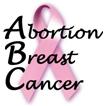NCI Changes Website Under Congressional Pressure
NCI’s New ABC "Facts": Fewer lies
US National Cancer lnstitute Changes Website Under Congressional Pressure
Sometime between June and September, what I had termed the NCI’s "brazen public disinformation campaign" (ABCQ Update, Summer 1998) got a little less brazen. At issue is the worldwide web page which the NCI devotes to abortion and breast cancer, under the heading: "Cancer Facts—Risk Factors". The same material is also distributed by the NCI in hard copy form.
The particular version which was deconstructed in detail in this journal (Summer 1998) was posted shortly after the publication of the Danish study by Melbye et al.1 in the influential New England Journal of Medicine in early 1997. Its recent modification came only after pressure from the US Congress, in the form of tough questions asked at subcommittee hearings, a detailed interrogatory follow-up letter from the Chairman of the Commerce Committee to the NCI Director (ABCQ Update, Winter 1998-99) and an open floor debate in the Congress this past June (ABCQ Update, Spring 1999).
The significant changes are embodied in the very first paragraph. The old version reads:
"Although it has been the subject of extensive research, there is no convincing evidence of a direct relationship between breast cancer and either induced or spontaneous abortion. Available data are inconsistent and inconclusive, with some studies indicating small elevations in risk, and others showing no risk associated with either induced or spontaneous abortions."
The new version is conspicuous for the absence of the phrase "no convincing evidence", and the word "inconclusive":
"The relationship between abortion and breast cancer has been the subject of extensive research. However, evidence of a direct relationship between breast cancer and either induced or spontaneous abortion is inconsistent. Some studies have indicated small elevations in risk, while others have not shown any risk associated with either induced or spontaneous abortion"
Even so, the last sentence still embodies no less than three misleading half-truths:
- "Some" v. "others" is a gross mischaracterization of the published record, which now stands at 26 out of 32 studies worldwide—12 out of 13 in the US alone—showing increased breast cancer risk among women who have chosen abortion;
- the five studies, 2 through 6, showing more than "small elevations in risk"— more than twofold—are conveniently omitted from the description; and
- the combination of induced and spontaneous abortion (miscarriage; which does not generally raise breast cancer risk (7)), dilutes the data into non-significance, covering up the significant—and avoidable risk—attributable to induced abortion.
But most significant—and welcome—is the complete elimination of the thoroughly dishonest sentence which had ended the first paragraph:
"The scientific rationale for an association between abortion and breast cancer is based on limited experimental data in rats, and is not consistent with human data."
Sad to say, the new version is mostly a reshuffling of the same material, which, on the whole, disparages the ABC link with half-truths, misleading statements and glaring omissions. Nevertheless, the most egregiously false statements were modified or removed, marking small but significant progress in the effort to bring truthful information on the ABC link to the public. There is still a long way to go to eliminate what Tom Coburn, MD, and Congressman from Oklahoma termed (at a July 1998 Congressional hearing): "what seems to be a bias for lack of what the facts are". -JB-
(The web address for the NCI web page on abortion and breast cancer is: http://cancernet.nci.nih.gov/clinpdq/risk/Abortion_and_Breast_Cancer.html.)

